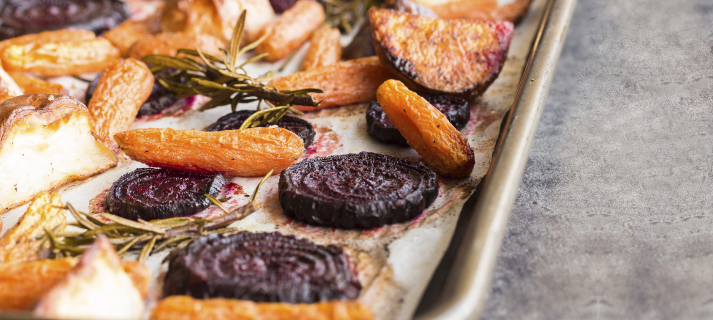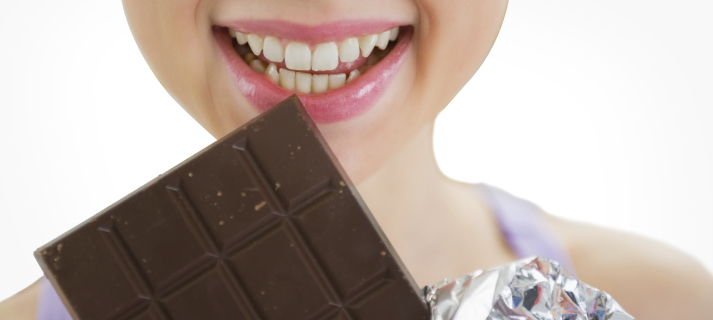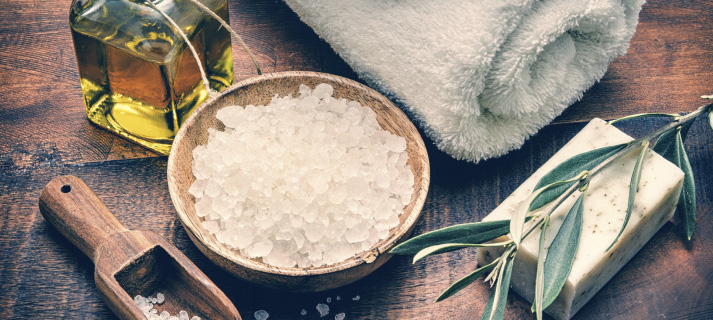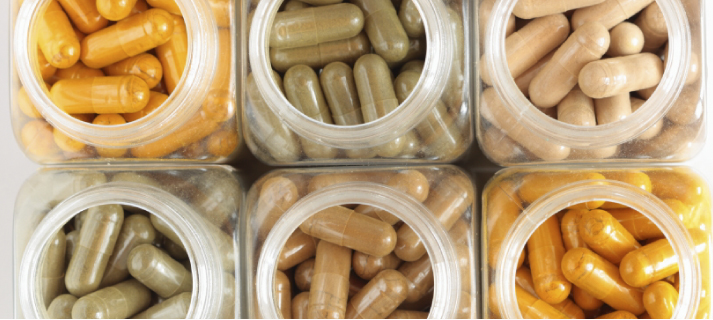
It happens every year. When the holiday season arrives, our healthy eating and exercise habits rapidly take a backseat to a host of temptations. The month and a half of festivities from Thanksgiving to New Year’s is a minefield of refined carbs, simple sugars, unhealthy fats, alcohol, and processed foods. Over time, the consumption of these harmful food groups leads to weight gain, gastrointestinal discomfort, unproductive sleep, fatigue, increased inflammation, and a general loss of health, vitality, and productivity. It also weakens the immune system, making us more susceptible to winter colds.
On the other hand, there is no need to completely abstain or deprive oneself of these simple pleasures and indulgences. After all, the holiday season comes only once a year, and it should be a season of happiness, togetherness, and, yes, special treats. The goal here is to strive for balance. This can be easily achieved when we thoughtfully prepare a range of healthy appetizers, starters, and sides to complement a holiday meal.
We hardly need to overthink the process. Our market basket at this time of the year is brimming with a range of phytonutrient-dense greens, powerhouse cruciferous vegetables, rich and velvety squashes, and sweet fruits that can easily be prepared into delicious and nutritious crowd-pleasing dishes. If we start our meal planning with fresh, whole foods, we’ll be able to pour that second glass of eggnog without a second thought.
Here are 11 great recipes to get you started.
Appetizers
Maple Spiced Nuts and Seeds
Ingredients
- 1 lb unsalted raw nuts and seeds (I love a mix of almonds, pecans, walnuts, and pumpkin seeds)
1/4 cup maple syrup
2 tsp chipotle powder
Salt and pepper to taste
Process
Preheat oven to 325 degrees F. In a bowl, combine maple syrup, chipotle powder, salt, and pepper. Add the nuts and toss well to coat.
Spread the nuts on a parchment-lined baking sheet. Bake for about 6–7 minutes, stir, and bake for an additional 6–7 minutes. Remove and place in a bowl to cool.
Curried Butternut Squash and Red Lentil Dip
Ingredients
- 2 cups butternut squash, peeled and cubed
1/4 cup red lentils
1 clove garlic, coarsely chopped
1 tsp ground cumin
2–3 tsp curry powder (to taste)
1 whole lemon, squeezed
Salt and pepper
1 cup raw pumpkin seeds, toasted
Process
Bring a medium pot of water to a boil. Add the butternut squash and 1/4 tsp salt, and cook until the squash is slightly soft. Add the lentils and garlic, and cook until the squash and lentils are soft.
Pour off the excess water, and place the contents of the pot into a blender. Add the ground cumin, curry powder, and lemon juice, and season with salt and pepper to taste. Blend until smooth.
Pour into a serving bowl, garnish with toasted pumpkin seeds, and refrigerate covered for about 2 hours. Serve with fresh raw veggies or bread.
Swiss Chard and Goat Cheese Quiche
Ingredients
- 3/4 lb Yukon Gold potatoes, sliced 1/2 inch thick
1 tbsp olive oil
1 bunch Swiss chard, washed carefully and coarsely chopped, with stems removed
1 tbsp garlic, minced
1/2 cup crumbled goat cheese, plain or herbed
1 cup 2% milk
3 large eggs
Salt and pepper to taste
Process
Preheat oven to 350 degrees F.
Bring a medium pot of water to a boil. Add the potato slices and a pinch of salt, and cook until the potato is just tender, about 5–10 minutes. When cooked, remove the potatoes from the pot.
Meanwhile, heat the oil in a large pot over medium heat. Add the chard and cook until wilted, tossing repeatedly, about 4 minutes. Add the garlic and cook for an additional minute.
Coat a 9″ x 9″ pan with cooking spray. Layer the potatoes at the bottom of the pan, and then top with chard and sprinkle with goat cheese.
Whisk together the milk and eggs and season with salt and pepper. Pour the egg mixture into the quiche pan. Cover the pan with parchment paper.
Bake the quiche for about 45–50 minutes, or until a fork comes out clean. Cool for a few minutes, cut into squares, and serve.
Sensational Salads
Arugula, Radicchio, Pear, and Candied Walnut Salad
Ingredients for Candied Walnuts
- 1 cup walnut halves
1 tbsp butter
3 tbsp light brown sugar
1/2 tsp ground cinnamon
1/4 tsp salt
Ingredients for Dressing
- 1 clove garlic, minced
1/4 tsp salt
1/4 tsp ground black pepper
2 tbsp walnut oil
1 tbsp Dijon mustard
1 tbsp white balsamic vinegar
Ingredients for Salad
- 8 cups baby arugula
2 firm, ripe red pears, sliced
Process for Candied Walnuts
In a nonstick ceramic pain over medium heat, add walnuts, sugar, and butter. Cook for about 5 minutes, stirring frequently so that the nuts are fully coated but don’t burn. Transfer immediately to a baking sheet lined with parchment paper and separate nuts with a spatula, working fast.
Process for Dressing
Stir all ingredients together until well mixed.
Process for Salad
Toss the arugula and dressing in a large bowl, and then add the pears and walnuts. Toss until all ingredients are well coated. Serve immediately or store in fridge.
Mixed Field Greens with Pomegranate and Crumbled Goat Cheese
Ingredients for Dressing
- 3 tbsp extra-virgin olive oil
1.5 tbsp lemon juice
1/4 tsp salt
1/4 tsp ground black pepper
Note: for a sweeter dressing, add 1/2 tbsp honey
Ingredients for Salad
- 10 cups mixed field greens
1/2 cup of pomegranate seeds
1/2 cup of crumbled goat cheese
1 orange, peeled and cut into 1/4″ slices, and then sliced in half
Process for Dressing
- Stir all ingredients together until well mixed.
Process for Salad
Toss greens with salad dressing. Garnish with pomegranate seeds, goat cheese, and orange slices.
Powerhouse Sides
Braised Red Cabbage
Ingredients
- 1 medium Vidalia or other sweet onion, thinly sliced
1 small head of red cabbage, cored and cut into 1/4″ thick slices
2 tbsp olive oil
2 bay leaves
1/2 cup red wine vinegar
2 tbsp light brown sugar
1 cinnamon stick
1 large green apple, peeled, cored, and diced
4 cups water
Himalayan salt and pepper to taste
Process
In a large pot, heat the olive oil, cinnamon stick, and bay leaves over medium heat. Add the onion and cook until tender, stirring occasionally. Add the cabbage and cook, turning occasionally, until the cabbage is wilted. Add all the remaining ingredients and simmer covered for about 50 minutes, or until the cabbage is tender and the liquid is syrupy.
Rosemary Roasted Root Vegetables
Ingredients
- 1 lb multicolored carrots, peeled and halved
4 medium parsnips, peeled and halved
4 golden beets, peeled, halved, and cut into wedges
1 large red onion, peeled, halved, and cut into wedges
1/4 cup olive oil
1 tbsp fresh rosemary, chopped
Salt and pepper to taste
Process
Toss all ingredients together in a large mixing bowl. Spread onto one or two large baking sheets. Bake at 425 degrees F, tossing occasionally until vegetables are tender and browned, about 35 minutes.
Shaved Brussels Sprouts with Shallots
Ingredients
- 1 lb Brussels sprouts, trimmed and thinly sliced
1/4 cup olive oil
1 cup shallots, thinly sliced
1/4 cup pine nuts, toasted
Process
Heat olive oil in a large pot over medium heat. Add the shallots and sauté until tender and translucent, about 3 minutes. Add the Brussels sprouts and sauté until tender, about 8 minutes. Stir in pine nuts and serve.
Kale with Red Onion, Pecans, and Raisins
Ingredients
- 1 medium red onion, thinly sliced
2 tbsp olive oil
1/4 cup golden raisins
1/4 cup chopped pecans
1 lb Lacinato kale, stemmed and chopped
Salt and pepper to taste
Process
Sauté the sliced onion in olive oil in a Dutch oven over medium heat until tender, about 4 minutes. Add the raisins and pecans and cook for an additional 1–2 minutes. Add kale and cook until wilted, about 3 minutes. Season with salt and pepper to taste.
Cranberry, Pear, and Ginger Chutney
Ingredients
- 1.5 cups pears, peeled, cored, and chopped
1 bag fresh cranberries
1 cup Vidalia onion, chopped
1/2 cup organic cane sugar
1/2 cup light brown sugar
3/4 cup golden raisins
1 cup water
2 tsp ground cinnamon
1/4 tsp ground cloves
1 tsp fresh ginger, peeled and minced
Process
Place all ingredients in a saucepan. Bring to a boil and simmer, stirring occasionally, until the mixture begins to thicken. Transfer to a glass container and let cool at room temperature, and then cover and refrigerate overnight.
Dessert
Apple Cranberry Crumble
Ingredients for Fruit Filling
- 8 apples, peeled, cored, and sliced 1/4 inch thick (I like a mixture of Golden Delicious and Granny Smith, but you can use any of your choice)
8 oz fresh cranberries
1 1/3 cup organic cane sugar (1 cup if you prefer less sweet)
2 tbsp cornstarch
2 tsp ground cinnamon
Ingredients for Topping
- 2 cups old-fashioned oats
1 1/2 cups all-purpose flour
1 1/3 cups light brown sugar (1 cup is enough if you prefer less sweet)
1/2 tsp salt
12 tbsp unsalted butter, melted
Process
Preheat oven to 375 degrees F.
In a large mixing bowl, toss all the fruit filling ingredients until well coated. Butter a 9″ x 13″ baking dish, and spread the fruit filling mixture evenly at the bottom of the pan.
For the topping, mix all the dry ingredients in a bowl and then add the melted butter. Mix to combine, and then spread evenly in the pan over the fruit filling.
Place the baking dish in the oven and bake for 1 hour, or until the filling is bubbling and the topping is golden brown. Cool for 20 minutes and serve with vanilla ice cream or whipped cream.
(Original Posting on Boomshop)











